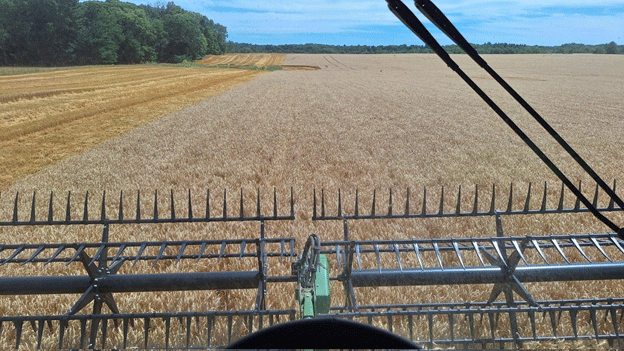The Chicago Board of Trade (CBOT) saw a dramatic response to the United States Department of Agriculture’s (USDA) latest reports on planted area and June stock numbers. Corn futures have been particularly hard hit, continuing a fortnight-long decline following the bearish data released last Friday.
The USDA’s June Planted Acreage Report revealed that 37.02 million hectares (Mha) were planted to corn this spring across the US, an increase of almost 600,000ha from the March Prospective Plantings Report and 450,000ha higher than market expectations. This area represents the eighth-largest corn planting in the US since 1944, despite being a 3.3% decrease compared to last year.
Corn Market Turmoil
The total area of corn expected to be harvested for grain is projected to be 33.77Mha, a 3.6% decrease from the previous year. Despite this reduction, the corn market reacted negatively to the higher-than-expected planted area. As of June 23, 69% of the corn in the 18 key states was rated as good to excellent, a slight drop from 72% the previous week but a significant improvement over the 50% rating from the same period last year.
Over the past two weeks, the July corn futures contract has lost 13.3% of its value, with a notable 3.3% drop occurring last Friday alone. This marked the ninth decline in ten sessions, setting a new contract low and reflecting the bearish sentiment pervading the market.
Wheat’s Unexpected Turn
In contrast, the wheat market presented mixed signals. The total area planted for the 2024 campaign is estimated at 19.12Mha, which is 950,000ha lower than in 2023. However, the harvested area forecast defied expectations, increasing to 15.7Mha from 15.1Mha last year. This discrepancy is largely due to the higher anticipated yield from Hard Red Winter and Soft Red Winter wheat varieties.
Despite a smaller planted area, winter wheat conditions have shown improvement, with 52% rated good to excellent as of June 23, up from 49% the previous week. Harvest progress is also ahead of schedule, with 40% of the crop already harvested, surpassing the five-year average of 25%.
Spring wheat plantings are up 1% year-on-year at 4.57Mha, with Hard Red Spring wheat comprising the bulk of this area. The spring wheat crop’s condition is also favorable, with 71% rated good to excellent.
Soybean Stability
Soybean futures remained relatively neutral in the face of the USDA reports. The planted area for soybeans this season is 34.84Mha, up from 33.83Mha last year and slightly above both the March indications and trade expectations. The harvested area is forecast at 34.5Mha, compared to 33.33Mha in 2023.
As of June 23, 67% of soybeans were rated good to excellent, down from 70% the previous week but well above last year’s 51% at the same time. Crop emergence was also favorable, at 90% compared to the five-year average of 87%.
Higher Stock Levels Add Pressure
The USDA’s June 1 grain stock data added further bearish pressure. Corn stocks were reported at 127 million tonnes (Mt), up 22.6Mt from last year, with on-farm and off-farm stocks increasing significantly. Wheat stocks also rose, reaching 19.1Mt, a 23.3% increase from 2023 levels. Soybean stocks followed suit, rising to 26.4Mt, a 21.8% year-on-year increase.
The USDA’s recent reports have triggered significant market reactions, especially for corn and wheat futures. While corn has seen substantial declines, wheat’s mixed signals and soybean’s relative stability highlight the complexities and volatility inherent in agricultural markets. As global weather patterns and production challenges continue to evolve, these markets are likely to experience further fluctuations in the coming months.
Error





